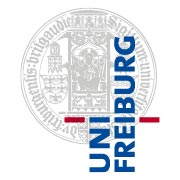Atomic ‘GPS’ elucidates movement during ultrafast material transitions

Brookhaven scientists used their new ultrafast pair distribution function (uf-PDF) technique to explore the transition of a quantum material to a previously undiscovered material phase. The above schematic shows how the absorption of a laser photon initiates a small change that propagates through the material over time, rather than instantaneously changing the whole material.
Credit: Jack Griffiths/Brookhaven National Laboratory
Scientists demonstrated that a materials characterization technique can be successful at a new type of facility, and they used it to discover a hidden materials phase.
Scientists from the U.S. Department of Energy’s (DOE) Brookhaven National Laboratory have created the first-ever atomic movies showing how atoms rearrange locally within a quantum material as it transitions from an insulator to a metal. With the help of these movies, the researchers discovered a new material phase that settles a yearslong scientific debate and could facilitate the design of new transitioning materials with commercial applications.
This research, recently published in Nature Materials, marks a methodological achievement; the researchers demonstrated that a materials characterization technique called atomic pair distribution function (PDF) analysis is feasible — and successful — at X-ray free-electron laser (XFEL) facilities. PDF is typically employed for synchrotron light source experiments, during which samples are bombarded with pulses of X-rays. By studying how X-ray diffraction patterns change after interacting with materials, scientists can better understand the properties of those materials. But these experiments are restricted by the shortest X-ray pulses that can be generated.
“It’s like a camera’s shutter speed,” explained Jack Griffiths, co-lead author of the paper. “If you are taking a photo of something changing faster than your camera’s shutter speed, your photo will be blurry. Like a quick shutter speed, shorter X-ray pulses help us view quickly changing materials in more detail.” Griffiths was a postdoctoral researcher in the X-ray Scattering Group within Brookhaven’s Condensed Matter Physics & Materials Science (CMPMS) Department when the research was conducted and is now a postdoctoral researcher at the National Synchrotron Light Source II (NSLS-II), a DOE Office of Science user facility at Brookhaven Lab.
Synchrotron light sources are excellent for characterizing materials that aren’t changing or materials that change over minutes to hours, like batteries as they charge and discharge. But this group of scientists wanted to observe material changes on picosecond time scales.
“It’s hard to imagine how fast a picosecond really is,” Griffiths said. In one second, light can travel around the Earth seven and a half times. But in one picosecond, light can only travel one third of a millimeter. “The time scales are almost incomparable.”
So, the scientists brought the PDF technique to an XFEL called the Linac Coherent Light Source (LCLS), a DOE Office of Science user facility at DOE’s SLAC National Accelerator Laboratory that generates incredibly bright and short pulses of X-rays.
“When you are doing something for the first time, there is always this aspect of unknown. It can be nerve-racking but also very exciting,” said Emil Bozin, the other co-lead author and a physicist in the CMPMS X-ray Scattering Group. “We knew the core limitations of bringing PDF to an XFEL, but we didn’t really know what to expect.”
With the fast “shutter speed” of LCLS, the scientists were able to create movies elucidating atomic movement, like that which occurs when their quantum material sample transitioned between a metal and an insulator.
“I was simply blown away by how well it worked,” said Simon Billinge, a physicist in the X-ray Scattering Group and a professor at Columbia University’s School of Engineering and Applied Science.
“It’s similar to needing a navigation app,” Billinge added. “You know where you are now and what your destination is, but you need the app to give you a route or a few route options. Ultrafast PDF was our navigation app.”
Understanding these atomic routes is an important first step for designing transitioning materials with a myriad of applications in computing, chemistry, and energy storage. Once scientists understand how the materials transition, they can then manipulate the atomic routes and design materials optimized for commercial applications. Computer memory materials, for example, transition to a different phase when a file is saved. In this case, it is important to have materials that don’t require a lot of energy to switch phases. But they also have to be resistant to unwanted phase switching and data corruption over long periods of time.
“Getting PDF working with an XFEL was the result of a huge organizational effort,” said Ian Robinson, the X-ray Scattering Group leader at Brookhaven Lab and a professor at the London Centre for Nanotechnology at University College London (UCL). For example, Robinson noted, “we closely coordinated with Sébastien Boutet and Vincent Esposito from LCLS to determine that the Macromolecular Femtosecond Crystallography (MFX) beamlines were the most promising for the PDF technique.”
The team also included physicists from Columbia University, University of Wisconsin, Madison, DOE’s Argonne National Laboratory, and the United Kingdom’s Science and Technology Facilities Council.
With their successful proof-of-principle experiments, the researchers were eager to look into another phase transition of the quantum material, which scientists study as a “model” for other useful materials. And the excitation of the material with a laser pulse led to an exciting discovery.
Uncovering a new material phase
Like the insulator to metal transition of this quantum material, some material transitions are driven by changes in temperature, pressure, or magnetic field. But because these environmental changes can occur naturally or unintentionally, they can be unreliable for some applications. When it comes to computing, it is important that the materials responsible for storing files don’t switch phases just because a room became too hot or cold.
So, the researchers looked into “non-equilibrium” transitions, a change in material state induced by a reliable and controlled trigger. In this case, they zapped the quantum material with a laser pulse.
Even though the laser light perturbed just a few atoms, those atoms’ neighbors responded to the change. And then the neighbors’ neighbors felt the impact, until the local change had propagated throughout the entire quantum material.
“It was just like how an earthquake on the ocean floor can disrupt a little bit of water and create a wave that eventually reaches the edge of the ocean,” added Billinge.
Using ultrafast PDF, the researchers closely observed atomic movement as the sample was bombarded with laser pulses. And for the first time, they directly observed the quantum material transitioning to a new state that had not yet been identified.
“This was like discovering a new, hidden phase of matter that is inaccessible during equilibrium transitions,” said Bozin.
The scientists’ discovery contributed to a yearslong debate of what really happens when certain quantum materials are excited by a laser; it is not just like heating the material, but rather the generation of a transient “metastable” intermediate state.
Interestingly, the material was disordered for tens of picoseconds, “even though it started and ended in an ordered state,” Griffiths said.
Robinson added, “The discovery of a transient state represents a new phase of the material, which lives for just a short time. This is a vital sign that an undiscovered, fully stable material may be lying at a nearby composition.”
Scientists are eager to uncover these “hidden” materials. But they also want to unlock the full potential of the new ultrafast PDF technique.
“There are several forms of complex phase switches that occur in quantum materials, and we plan to explore them with ultrafast PDF,” said Bozin. “Understanding these phase transitions can facilitate the development of commercial materials. But the scientific community can also use the technique to answer fundamental physics questions, explore ultrafast phenomena, and build better superconductors.”
He added, “Though we answered questions about material transition pathways, it seems as if we have opened a door rather than closing one.”
Like this project, future ones will not be successful without multidisciplinary collaboration.
“We didn’t just use the LCLS facilities at SLAC,” Billinge explained. “The people there were also integral to making ultrafast PDF a success.”
The Brookhaven team is ready to optimize the ultrafast PDF technique, especially as LCLS is upgraded to LCLS-II-HE, which will enable even higher resolution molecular movies.
“There is international interest in making this a routine and successful technique,” said Bozin. “And we are looking forward to being a part of it.”
Sample preparation was done at the Center for Functional Nanomaterials, a DOE Office of Science user facility at Brookhaven Lab. Additional measurements were taken at the Advanced Photon Source, a DOE Office of Science user facility at Argonne.
This work was mainly supported by the DOE Office of Science.
Brookhaven National Laboratory is supported by the Office of Science of the U.S. Department of Energy. The Office of Science is the single largest supporter of basic research in the physical sciences in the United States and is working to address some of the most pressing challenges of our time. For more information, visit science.energy.gov.
Follow @BrookhavenLab on social media. Find us on Instagram, LinkedIn, X, and Facebook.
Related Links:
Journal: Nature Materials
DOI: 10.1038/s41563-024-01974-1
Article Title: Resolving length-scale-dependent transient disorder through an ultrafast phase transition
Article Publication Date: 13-Jun-2024
Media Contact
Danielle Roedel
DOE/Brookhaven National Laboratory
droedel@bnl.gov
Original Source
All latest news from the category: Materials Sciences
Materials management deals with the research, development, manufacturing and processing of raw and industrial materials. Key aspects here are biological and medical issues, which play an increasingly important role in this field.
innovations-report offers in-depth articles related to the development and application of materials and the structure and properties of new materials.
Newest articles

New results from the CMS experiment put W boson mass mystery to rest
After an unexpected measurement by the Collider Detector at Fermilab (CDF) experiment in 2022, physicists on the Compact Muon Solenoid experiment (CMS) at the Large Hadron Collider (LHC) announced today a…

NASA completes spacecraft to transport, support Roman Space Telescope
The spacecraft bus that will deliver NASA’s Nancy Grace Roman Space Telescope to its orbit and enable it to function once there is now complete after years of construction, installation,…

Ion-Trap Quantum Computer for Novel Research and Development
The AQT quantum computer, featuring 20 qubits based on trapped-ion technology, is now operational at LRZ’s Quantum Integration Centre (QIC), making it the first of its kind in a computing…















